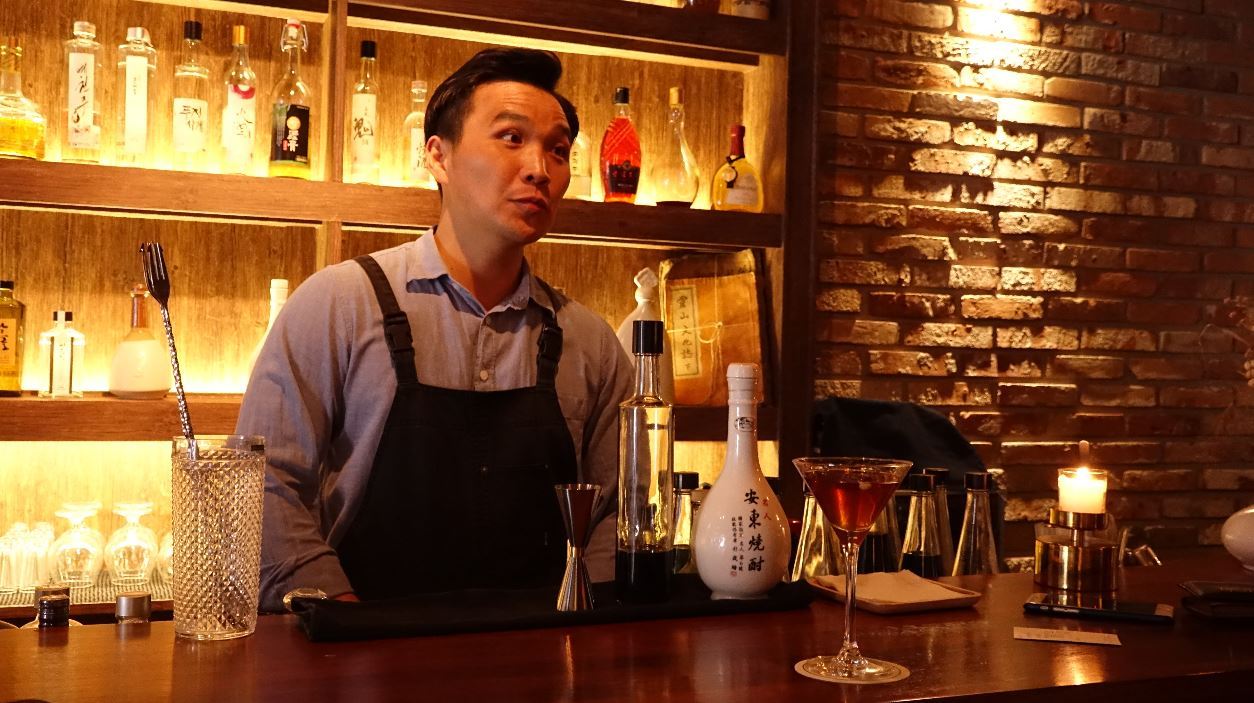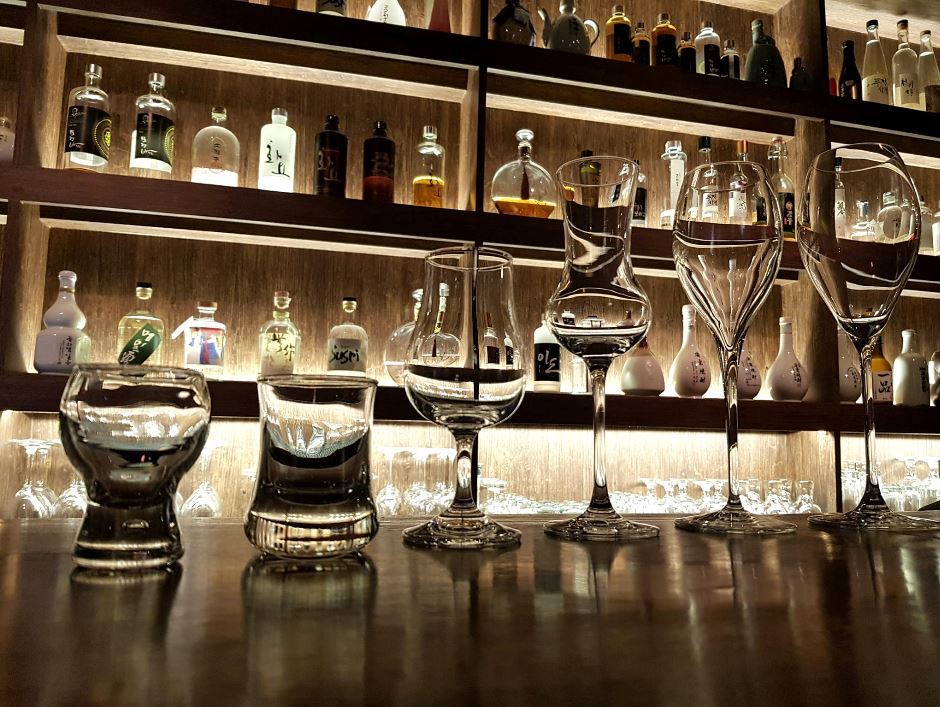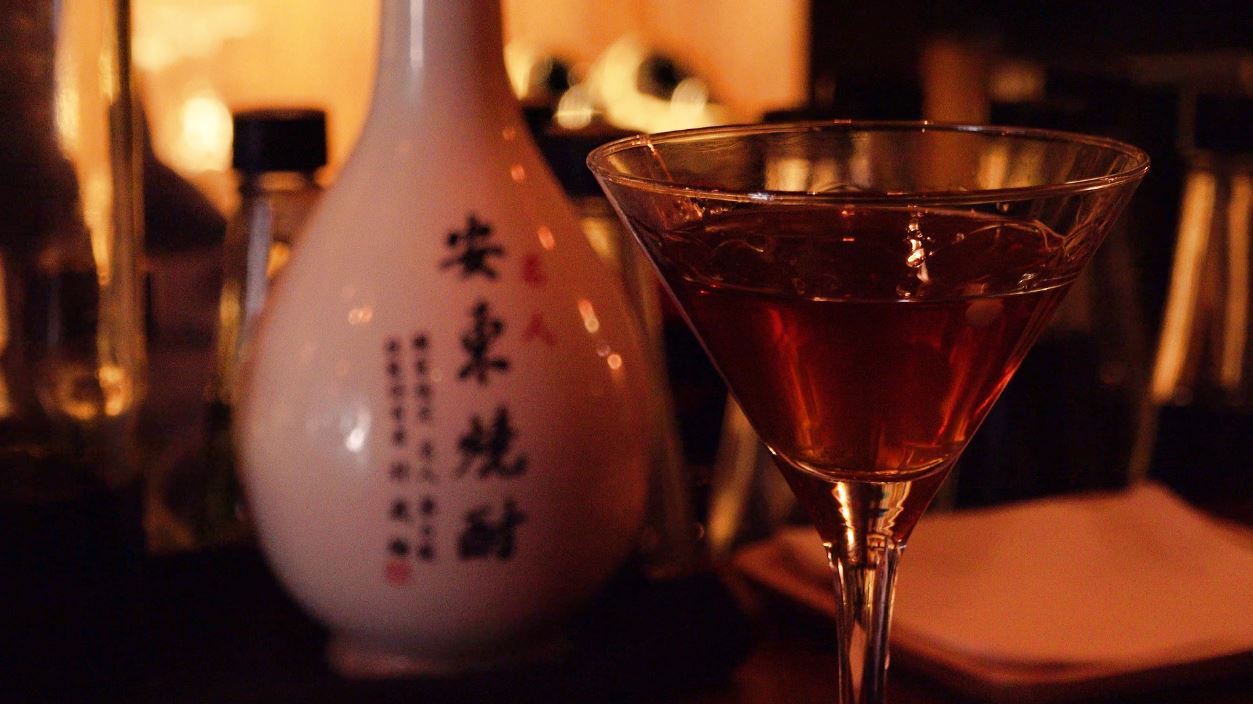[Weekender] Traditional liquor-based cocktails beckon adventurous drinkers
By Im Eun-byelPublished : May 10, 2019 - 14:27
Fancy a glass of sujeonggwa-tini?
Sujeonggwa is persimmon punch made with cinnamon and ginger, usually served as dessert. To create sujeonggwa-tini, local distilled spirit is added to the sweet traditional drink, and the mixture is shaken with ice in a reinterpretation of traditional Korean liquor.
As its name suggests, sujeonggwa-tini is similar to martini, with strong soju serving as the base. Pine nuts are sprinkled on top as a garnish.
Sujeonggwa is persimmon punch made with cinnamon and ginger, usually served as dessert. To create sujeonggwa-tini, local distilled spirit is added to the sweet traditional drink, and the mixture is shaken with ice in a reinterpretation of traditional Korean liquor.
As its name suggests, sujeonggwa-tini is similar to martini, with strong soju serving as the base. Pine nuts are sprinkled on top as a garnish.
The drink is one of nine cocktails mixed with Korean liquor on the menu at Zac in Yeoksam-dong, southern Seoul.
The bar does not serve drinks like the Cosmopolitan and White Russian, though its drinks are based on conventional cocktails.
Zac is all about authentic Korean drinks, from spirits to beer to cocktails.
“It is actually quite difficult to define what traditional Korean liquor is. So, I just call my bar a place that serves authentic Korean drinks,” Kang Byung-ku, the owner of the bar told The Korea Herald. “All the liquor sold here is produced in Korea, including the beer.”

The bartender in his early 40s opened the bar in 2016, a few years after quitting his job in the IT industry. At the time, to his knowledge, Zac was the first and only place that filled its shelves solely with Korean liquor.
Though Zac has cocktails on the menu, Kang stresses that the bar is more about spirits.
Zac offers around 50 varieties of Korean spirits, priced around 5,000 to 7,000 won ($4 to $6) per glass, similar to the concept of a whiskey bar.
“People do not really know much about Korean liquor. It is overwhelming for them to purchase the whole bottle without knowing what the drink will be like, so I serve drinks by the glass,” Kang said.

To allow customers to make the most out of the experience, Zac offers samplers, including one for Andong Soju, which refers to stronger types of premium soju that usually have alcohol content of 45 percent.
Made with water and rice from Andong, North Gyeongsang Province, the soju varieties are considered upscale versions of the more common soju in green bottles.

Even within the category of Andong Soju, there are differences in taste depending on the maker.
The sampler allows one to taste such differences.
Opening the bar was a challenge for Kang, as there had not been previous examples. The industry is still relatively small. However, interest in Korean liquor has been rising in recent years.
For instance, Sooldabang in Euljiro, central Seoul, is a similar type of bar serving traditional Korean liquor. Opened in late 2018, the bar focuses more on mixed drinks like cocktails, unlike Zac.
Furthermore, more five-star hotels are serving cocktails made with traditional Korean liquor at their bars, in an effort to attract both locals and foreigners.
For instance, JW Marriott Seoul’s head bartender Leo Seo, recognized for his trendy cocktails with a Korean touch, is an honorary ambassador for traditional Korean liquor.
“The best part of Korean liquor is that it is easy. For wine or whiskey, they require certain knowledge and an acute sense to detect tiny differences,” Kang said.
“But Korean liquor is easy to approach as the varieties are all greatly different in taste and smell, with strong characteristics.”
By Im Eun-byel (silverstar@heraldcorp.com)



















![[Today’s K-pop] BTS pop-up event to come to Seoul](http://res.heraldm.com/phpwas/restmb_idxmake.php?idx=642&simg=/content/image/2024/04/17/20240417050734_0.jpg&u=)